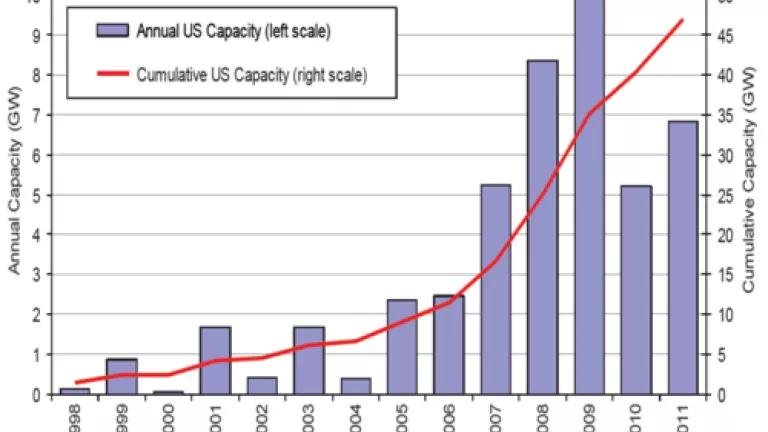
An important wind power study (also helpful presentation version) was released today by two prominent energy experts from Lawrence Berkeley National Labs - Ryan Wiser and Mark Bolinger. Each have each been studying the renewable energy sector for decades, and their annual market report is one of the most reputable and non-partisan “State of the Wind Industry” efforts available.
It covers a wide range of topics, but mirrors much of what the rest of the industry has been saying – growth is strong, costs are coming down, technologies are improving, and all of this is at risk due to uncertainty of policies, especially the extension of the wind production tax credit.
Among the highlights:
- Continued growth in wind power: annual installations rose 31%, as the U.S. added 6,800 megawatts of wind power in 2011, equivalent to the power generated by about five large coal power plants. All told, the U.S. now has nearly 50,000 megawatts of wind capacity – double the capacity from just three years ago in 2008.
- Wind competing aggressively with fossil fuel power: over the last 7 years, wind power has been the largest or second largest energy resource added annually in the U.S. This year was no exception, with wind representing one third of all power capacity added in 2011.
- Wind power represented across the country: 37 states contain at least one wind project, with six states getting more than 10% of their power from wind energy and South Dakota and Iowa getting fully 20%
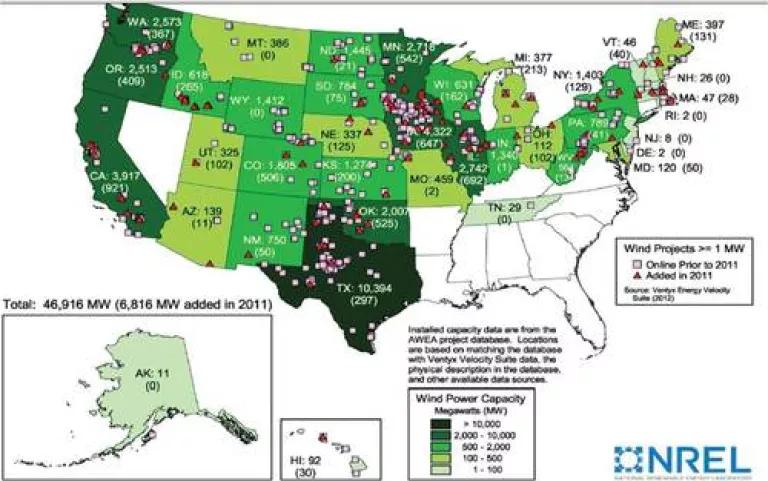
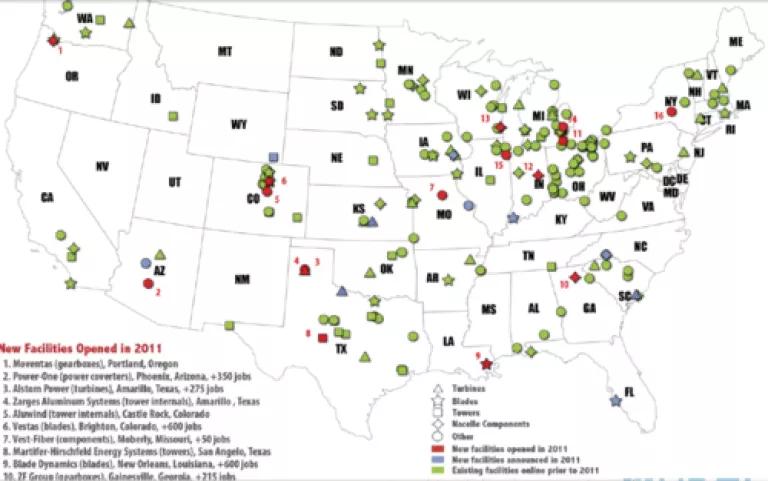
- Innovation in wind technology continues: average turbine size, hub heights and rotor diameters all continue to increase – leading to cheaper, more efficient wind energy solutions
- Wind power costs continue to fall: turbine prices and total installed project costs have fallen nearly 20% from their high in 2008. O&M (operations and maintenance) costs have continued to fall as well. Similarly, wind power contracts (PPAs) have fallen in half since 2009.
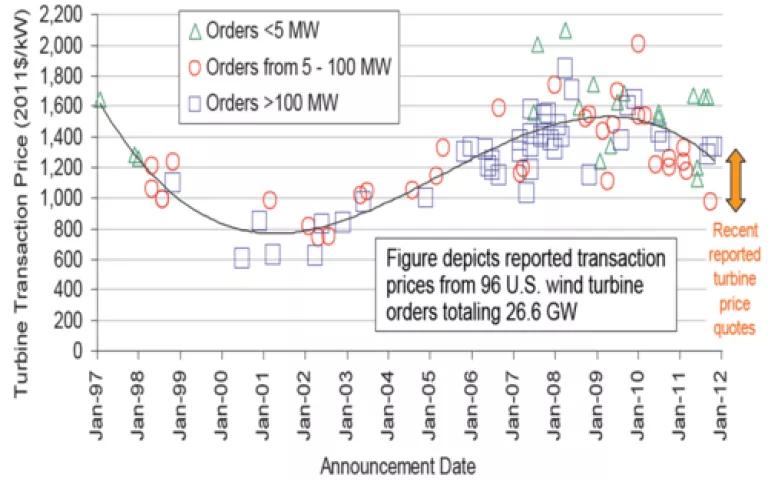
Unfortunately, this incredible progress, perhaps most effectively underlined by the 75,000 workers now employed in the U.S. wind industry, is now at risk according to the report. Due to “serious federal policy uncertainty” brought on by the expiration of tax credits for wind power, the new policy landscape in 2013 “cannot support continued growth at levels seen in the recent past”.
In one sadly helpful chart, the report documents a wide selection of studies that collectively tell a powerful story of finishing a strong American success story with a bitter ending. Wind installations are expected to drop anywhere from 70% to 90+% if federal tax incentives for wind power aren’t extended. By comparison, extending these tax incentives would maintain our advancements in the wind industry and continue our transition towards a clean energy future.
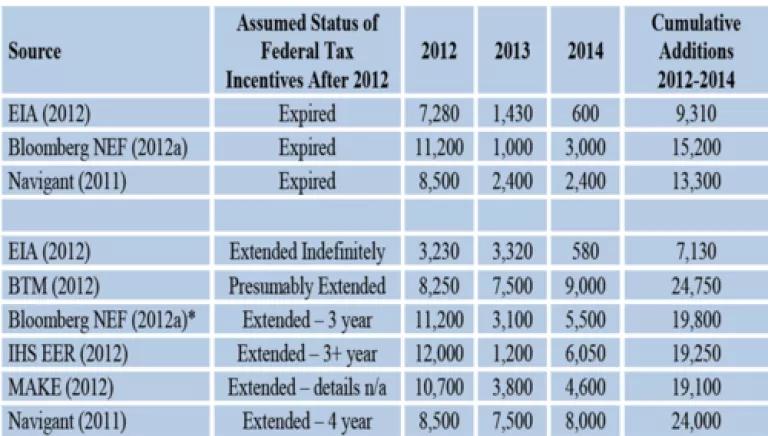
The wind industry is present in nearly every state - and getting our power from clean, renewable energy shouldn't be a partisan issue.
Extending the wind production tax credit is a critical step towards increasing clean energy jobs, reducing pollution and maintaining American leadership in this growing global industry.
